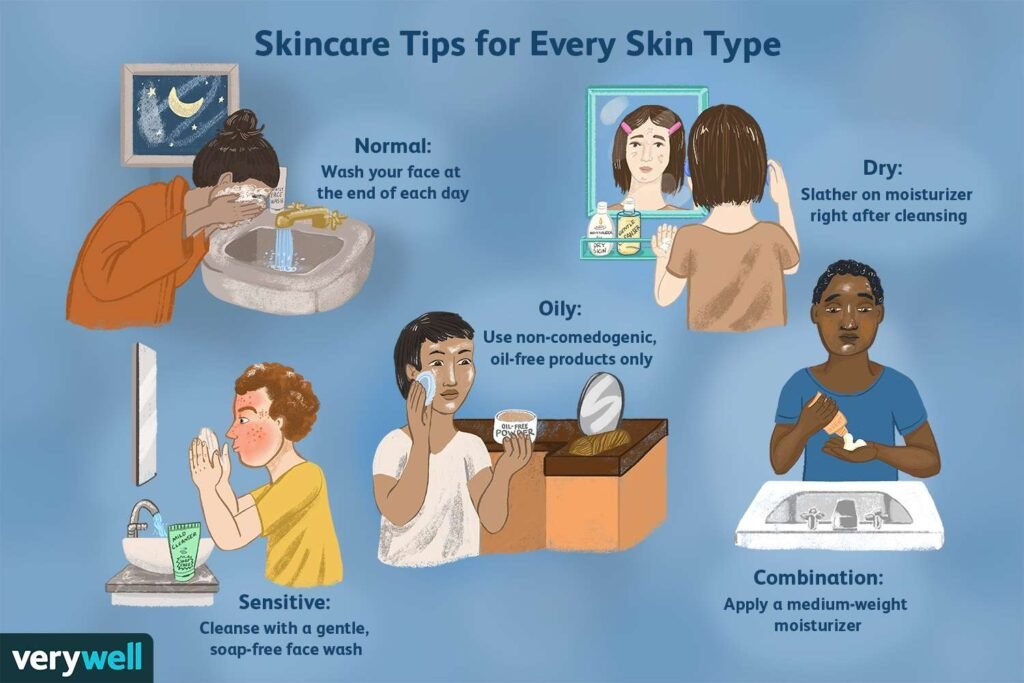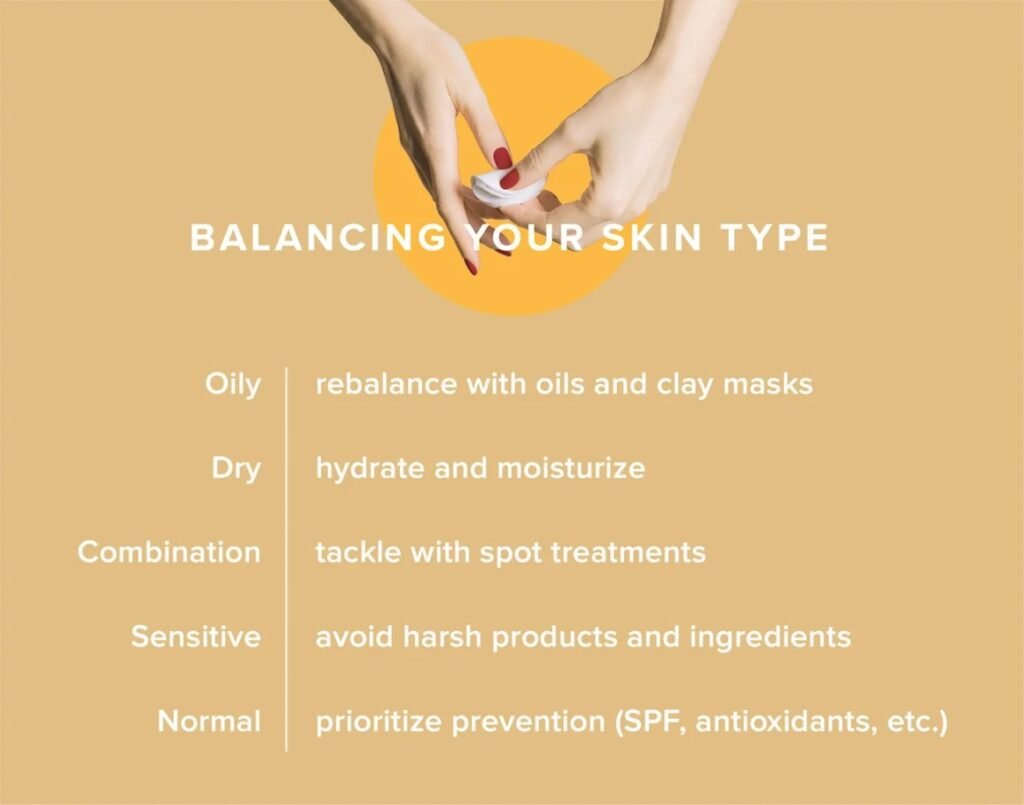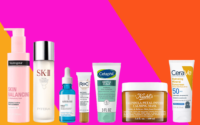How Do You Determine The Best Skincare Products For Your Skin Type?
Are you struggling to find the perfect skincare products tailored to your skin type? Look no further! In this article, we will discuss how to determine the best skincare products for your specific needs. By understanding your skin type, conducting thorough research, and considering key factors, you can confidently select the products that will bring out the best in your complexion. Whether you have dry, oily, sensitive, or combination skin, this guide will help you navigate through the vast world of skincare and make informed choices that will leave your skin looking and feeling its absolute best.

This image is property of www.wikihow.com.
Understanding Your Skin Type
Determine your skin type
Understanding your skin type is essential in finding the best skincare products for your specific needs. Start by observing your skin’s characteristics and how it responds to different environments and products.
Normal skin
If you have normal skin, consider yourself lucky! Normal skin is well-balanced, neither too oily nor too dry. It has a smooth texture and minimal imperfections. You may experience occasional breakouts or dryness, but overall, your skin tends to be resilient and healthy.
Dry skin
Dry skin can feel tight, rough, and flaky. It often lacks moisture and may appear dull or irritated. Cold weather, harsh cleansers, and aging can worsen dryness. Look for hydrating ingredients like hyaluronic acid and ceramides to nourish and plump your skin.
Oily skin
Oily skin is characterized by an overproduction of sebum, which can lead to a shiny and greasy appearance. You may be prone to acne, blackheads, and enlarged pores. Choose oil-free or non-comedogenic products that help control oil production, such as salicylic acid or benzoyl peroxide.
Combination skin
If your skin is a mix of both oily and dry areas, you likely have combination skin. Your T-zone (forehead, nose, and chin) may be oilier, while your cheeks and other areas may be drier. Finding a balance is key, so opt for products that address both concerns, like gentle cleansers and lightweight moisturizers.
Sensitive skin
Sensitive skin is easily irritated, often reacting to various skincare products or environmental factors. It may become red, itchy, or develop rashes. Look for fragrance-free and hypoallergenic products, and consider soothing ingredients like aloe vera or chamomile to alleviate sensitivity.
Identifying Your Skin Concerns
Acne
Acne is a common skin concern that can affect people of all ages. It occurs when hair follicles become clogged with oil and dead skin cells, leading to pimples, blackheads, or whiteheads. Look for skincare products containing ingredients like salicylic acid, tea tree oil, or benzoyl peroxide to combat acne-causing bacteria.
Fine lines and wrinkles
As we age, our skin naturally loses elasticity and collagen, leading to the appearance of fine lines and wrinkles. Choose products with anti-aging ingredients such as retinol, peptides, or vitamin C to help minimize the signs of aging and promote a more youthful complexion.
Dryness
Dryness can cause discomfort and lead to rough, flaky skin. Look for products that provide intense hydration and moisture, like moisturizers with hyaluronic acid or natural oils like jojoba or argan oil. Additionally, consider incorporating a hydrating serum or sheet masks into your routine to give your skin an extra boost.
Hyperpigmentation
Hyperpigmentation refers to patches of darker pigmentation on the skin, often caused by sun damage, acne scars, or hormonal changes. Look for skincare products with ingredients like vitamin C, niacinamide, or kojic acid to fade dark spots and even out your skin tone over time.
Sensitive skin issues
Sensitive skin requires extra care and attention to prevent irritation or allergic reactions. Avoid products with harsh ingredients like fragrances, alcohol, or artificial dyes. Instead, opt for gentle, soothing ingredients like oatmeal, chamomile, or green tea to help calm and nourish your sensitive skin.
Pores
Large or clogged pores can be a concern for some individuals, especially those with oily or combination skin. Incorporate products containing ingredients like salicylic acid, niacinamide, or clay masks into your routine to help minimize the appearance of pores and control excess oil production.
Researching Ingredients
Learn about common skincare ingredients
Education is key when it comes to understanding the ingredients in your skincare products. Take the time to research and learn about common skincare ingredients and their benefits. This knowledge will empower you to make informed decisions when selecting products for your skin type and concerns.
Identify ingredients suitable for your skin type
Once you understand your skin type and concerns, you can narrow down the list of ingredients that specifically address your needs. For example, if you have dry skin, look for ingredients like hyaluronic acid, glycerin, or ceramides that provide hydration and moisture.
Consider potential irritants or allergens
It’s also important to be aware of potential irritants or allergens that may cause adverse reactions on your skin. Some common culprits include fragrances, sulfates, and parabens. Pay attention to product labels and opt for fragrance-free or hypoallergenic options if you have sensitive skin.
Consulting with a Dermatologist
Seek professional advice
If you’re unsure about your skin type or have persistent skin concerns, consider consulting with a dermatologist. They can provide a thorough analysis of your skin and recommend products tailored to your specific needs.
Understanding your specific skin needs
A dermatologist can help you understand your skin better by identifying any underlying conditions or concerns that may require specialized treatment. They can also offer advice on lifestyle modifications, such as diet and stress management, to improve your overall skin health.
Getting personalized recommendations
Dermatologists have access to a wealth of knowledge about skincare products and ingredients. They can recommend specific products or formulations that are suitable for your skin type and concerns, taking into account your individual preferences and budget.

This image is property of www.verywellhealth.com.
Reading Product Labels
Check the product’s purpose
When reading product labels, start by understanding the purpose of the product. Is it a cleanser, moisturizer, serum, or treatment? Knowing the intended use will help you determine if it aligns with your skincare needs.
Look for key active ingredients
The active ingredients in a skincare product are the ones responsible for delivering the desired benefits. Look for key ingredients that address your specific concerns. For example, if you’re looking to target hyperpigmentation, seek products with ingredients like vitamin C or niacinamide.
Avoid harmful ingredients
Be cautious of harmful ingredients that can potentially irritate or damage your skin. Common harmful ingredients to avoid include sulfates, parabens, phthalates, and synthetic fragrances. Opt for clean, non-toxic, and environmentally friendly options whenever possible.
Reading Customer Reviews
Gather feedback from other consumers
Reading customer reviews can provide valuable insights into how a product performs for different individuals. Look for reviews from people with similar skin type and concerns to get a better understanding of whether a product may work for you.
Consider different perspectives
Understanding that everyone’s skin is unique, consider different perspectives when reading customer reviews. A product that works for one person may not work for another due to individual variations. Look for patterns and common experiences to gauge the overall effectiveness of a product.
Be cautious of biased or fake reviews
While customer reviews can be helpful, it’s important to be cautious of biased or fake reviews. Some reviews may be influenced by personal preferences, sponsored content, or even malicious intent. Look for genuine, detailed reviews from trusted sources or platforms.

This image is property of beautyglossips.files.wordpress.com.
Patch Testing
Test products on a small area of your skin
To minimize the risk of adverse reactions or allergies, it’s recommended to patch test new products on a small area of your skin before incorporating them into your routine. Apply a small amount of the product to your inner wrist or behind your ear and wait for at least 24-48 hours to observe any negative reactions.
Observe for any adverse reactions
During the patch testing period, pay attention to any redness, itching, burning, or swelling. If you experience any adverse reactions, discontinue use of the product immediately. This step is especially crucial for individuals with sensitive or reactive skin.
Wait for at least 24-48 hours
Giving your skin sufficient time to react to a new product is important. Waiting for at least 24-48 hours will allow you to assess if the product is suitable for your skin without rushing into full-face application.
Sampling and Trial Sets
Try out sample sizes or trial sets
Many brands offer sample sizes or trial sets of their skincare products, allowing you to try them out before committing to full-sized versions. Take advantage of these opportunities to test how a product performs on your skin and determine if it’s worth investing in.
Assess product performance on your skin
Sampling skincare products allows you to assess their performance and compatibility with your skin. Does the product feel comfortable? Does it effectively address your concerns? Observing these factors will help you make a more informed decision when purchasing full-sized products.
Evaluate compatibility and efficacy
Sampling and trial sets also give you the chance to evaluate the compatibility and efficacy of a full skincare regimen. Trying multiple products from the same brand or line can help you determine if they work synergistically and provide the desired results for your skin concerns.

This image is property of www.wikihow.com.
Considering Budget and Affordability
Set a skincare budget
Skincare products can range from budget-friendly to high-end luxury, so it’s important to establish a skincare budget that suits your financial situation. Determine how much you’re willing to invest in your skincare routine and prioritize essential products based on your needs.
Compare prices and value for money
When comparing prices of skincare products, don’t solely focus on the cost. Consider the value for money by assessing the product’s quality, ingredients, and effectiveness. Sometimes spending a little more on a well-formulated product can provide better long-term results.
Prioritize essential products
Rather than splurging on every trending skincare item, prioritize essential products that address your specific concerns. Invest in a good cleanser, moisturizer, and sunscreen, as these form the foundation of a solid skincare routine. You can gradually add additional products if needed.
Tailoring Your Skincare Routine
Develop a personalized skincare regimen
Once you have identified your skin type, concerns, and suitable products, develop a personalized skincare routine that works for you. This routine should include cleansing, toning, moisturizing, and protecting your skin from the sun. Consistency is key for optimal results.
Consider the order of product application
The order in which you apply your skincare products is crucial for their efficacy. As a general guideline, start with cleansing, followed by toner, serums or treatments, moisturizer, and finally sunscreen during the day. Give each product a few minutes to absorb before applying the next.
Adjust skincare routine as needed
Your skincare routine may need adjustments over time as your skin changes or you tackle different concerns. Be open to tweaking your routine and incorporating new products when necessary. Regularly reevaluating your skincare needs will ensure your routine remains effective.
By understanding your skin type, identifying your skin concerns, researching ingredients, consulting with a dermatologist, reading product labels and customer reviews, patch testing, sampling and trying trial sets, considering budget and affordability, and tailoring your skincare routine, you can confidently navigate the world of skincare and find the best products suited for your specific needs and preferences. Remember to always prioritize the health and well-being of your skin and be patient in finding what works best for you. Your skin deserves the attention and care it needs to look and feel its best.

This image is property of i0.wp.com.


